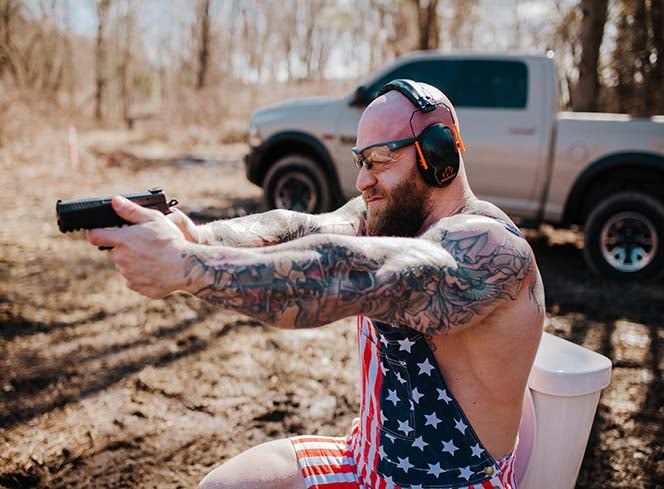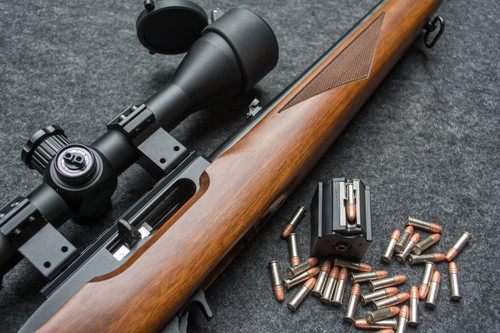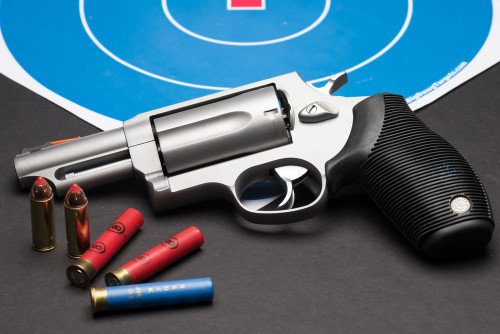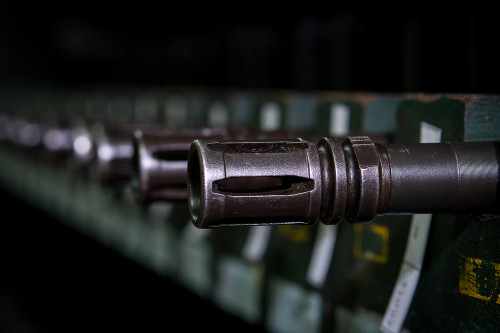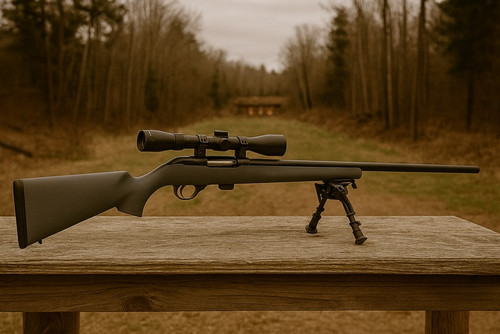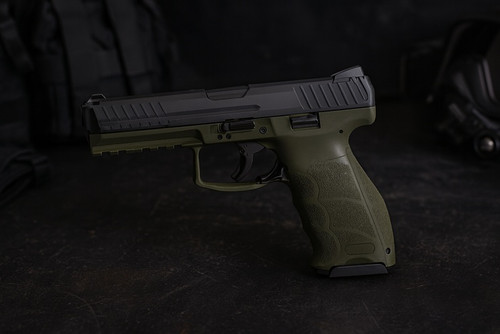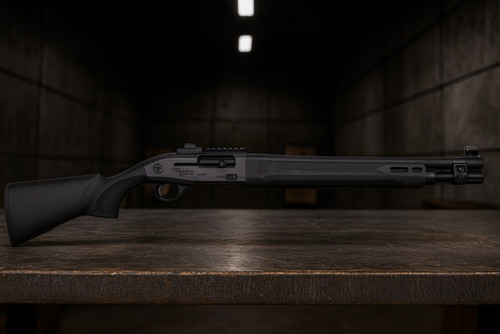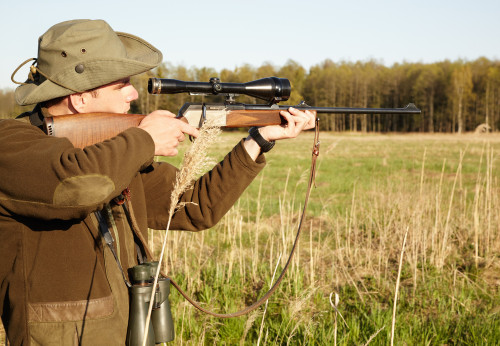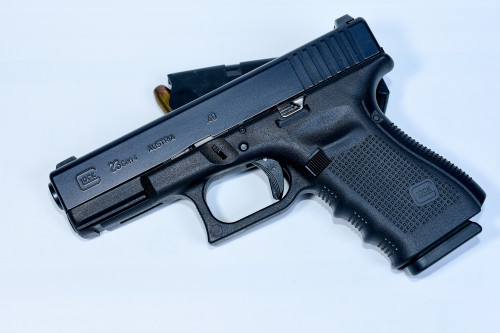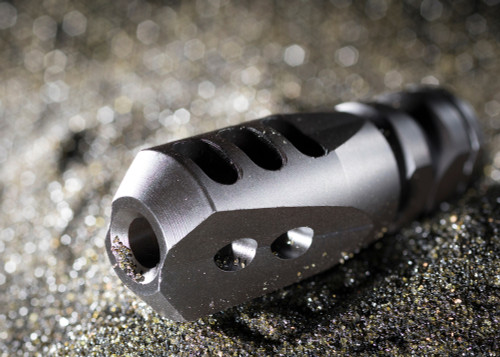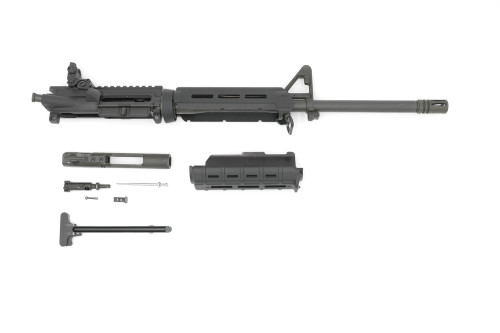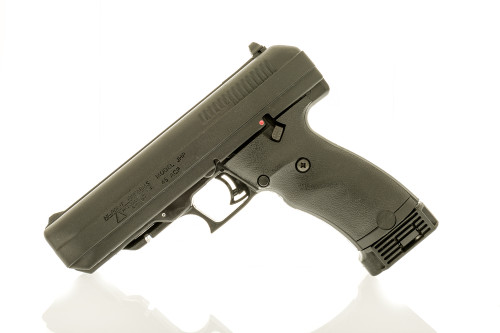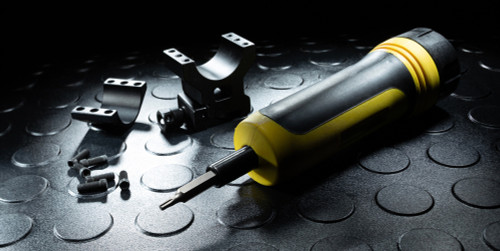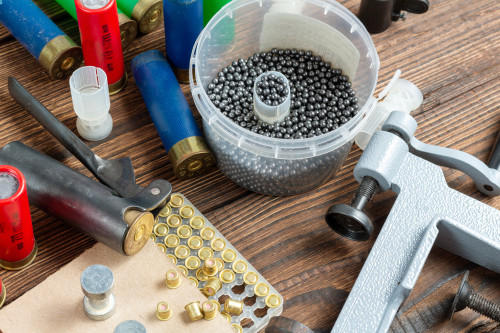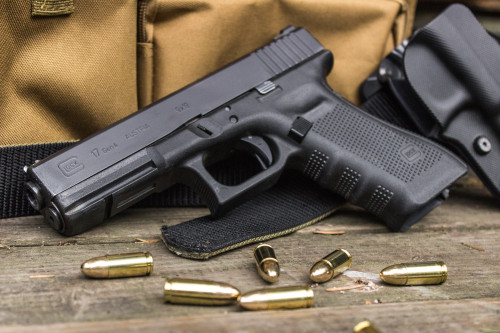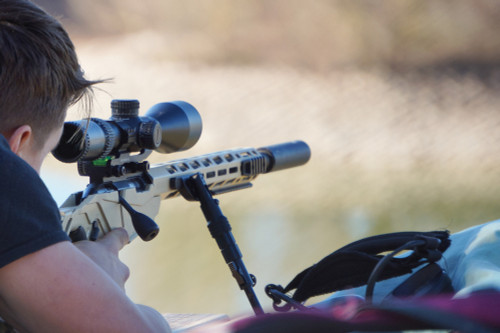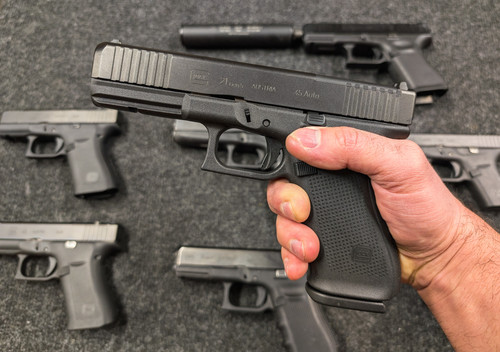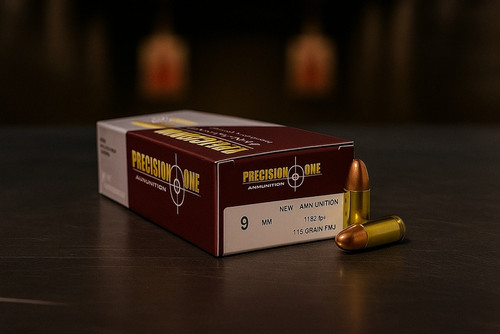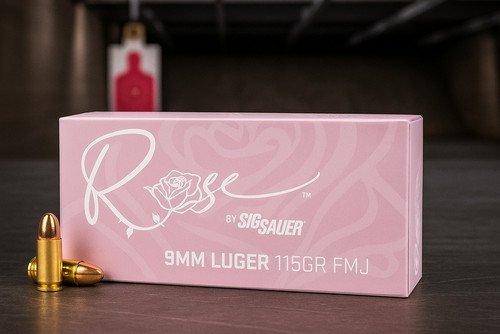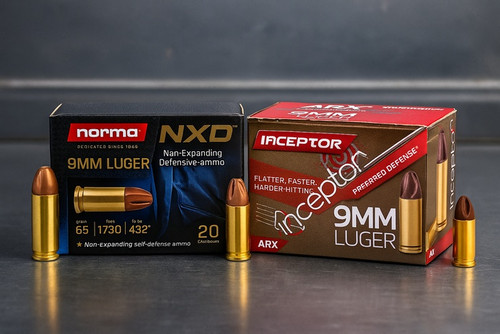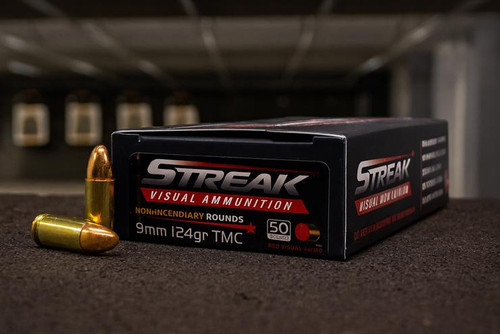Quick Answer
Dry fire training builds trigger control, sight alignment, and gun handling at home with no ammunition present. First set a safe space, clear the firearm, remove all live rounds from the room, and designate a safe backstop. Short daily sessions compound fastest. Training aids like snap caps, par timers, and laser tools add feedback. Start with fundamentals (coin drill, draw, reloads, one-hand work) and use apps or journals to track progress.
Key Takeaways
- Safety first: clear gun, no live ammo in the room, safe backstop
- Short daily reps beat rare long sessions
- Timers and laser/MoCap tools provide objective feedback
- Mix free drills with smart aids; results are gun- and load-dependent
- Track results so gains are visible and repeatable
What Is Dry Fire Training and Why Use It?
Dry firing means you practice the mechanics of shooting with no ammo. You pull the trigger on an empty gun to build solid habits. You cut the cost of ammo and skip the trip to the range. Simple. Safe setup first, of course.
Always follow your firearm’s owner’s manual. Most modern centerfire pistols and rifles tolerate extensive dry fire; many rimfires and some older designs benefit from snap caps or chamber blocks to protect the firing pin and breech face.
The routine builds trigger control, sight alignment, draw speed, reload rhythm, and fixing malfunctions. These core skills carry straight into live fire. So your time at the range works harder. And you see progress faster.
When the range is far or ammo is tight, dry fire keeps you sharp. Many top competitors credit steady daily practice for their gains. Even five minutes each day beats one long session each month.
Safety Setup at Home (Non-Negotiable)
First, always fully unload your firearm. Remove the magazine, lock the slide or bolt open, and both look and feel inside the chamber to verify it's empty. Say "clear" out loud to reinforce the check.
Next, remove all live ammunition from your practice area. Not just from the gun—from the entire room. If you leave the room for any reason, re-check your firearm when you return.
First, unload fully: remove the magazine, lock the action open, and both look and feel the chamber. Insert a bright chamber flag.
Second, remove all live ammunition from the room (pockets, bags, bins). If you leave the room at any time, re-clear on return.
Third, choose a safe backstop (e.g., brick, masonry, purpose-built trap) with nothing you care about behind it. Avoid pointing at doors, windows, thin walls, people, or pets.
Use a start/stop ritual: say “I am now dry firing,” and when done, “Dry fire is over,” then immediately store the gun before any live ammo re-enters the room.
Your First 10 Minutes: A Beginner Flow
Start with stance and grip for one minute. Square to the target, slight forward lean, and check your grip pressure—firm but not white-knuckled.
If your slide or front sight will support it, balance a coin and press the trigger without disturbing it; otherwise, substitute a wall drill (front sight pressed to a blank wall) to monitor movement.
Practice your draw for three minutes next. Move slowly and focus on a clean grip, smooth presentation, and proper sight alignment. Speed comes later after you've built good habits.
Finish with three minutes of slide-lock reload practice. Empty gun, grab magazine, insert firmly, release slide, reacquire target. Repeat until smooth.
After finishing, jot down what went well and what needs work. This simple tracking helps spot patterns over time.
The 10 Proven Dry Fire Training Aids
SG Timer GO + Drills app (Shooters Global)
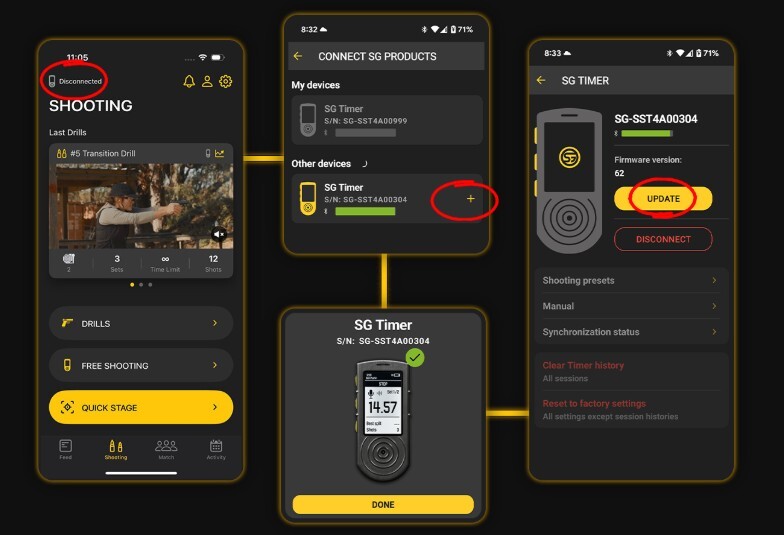
The SG Timer GO is one of the few consumer timers that can detect many dry-fire clicks when sensitivity is set correctly. Performance depends on the gun’s striker or hammer noise and room acoustics. Paired with its Drills app, you can build custom strings with prep times for reset and track trends over time, and even participate in community challenges.
Price: typically around the mid-$100s
Specs
- Universal use
- App: Drills (Shooters Global)
- Live-fire compatible: Yes (dry fire and live fire modes)
Features
- Sensitivity tuning for dry fire
- Custom strings with prep times
- Community drills and resources
Pros
- Honest time feedback
- Flexible for home and range
- Strong app integration
Cons
- Learning curve
- Requires phone/app setup
- Needs targets for some modes
DryFireMag (Trigger-Reset Magazine)

DryFireMag replaces your magazine and mechanically resets the trigger, avoiding slide racks between presses. It enables multi-shot strings without breaking grip, but expect a different trigger feel than live fire.
For Glock, SIG P320, S&W M&P, and Springfield XD pistols, this tool allows you to practice multiple-shot drills like failure to stop or el presidente without interruption. The seamless trigger reset keeps your grip consistent and lets you focus on sight tracking through strings of fire.
Price: $98–$99
Specs
- Firearm-specific models
- App: None
- Live-fire compatible: No (dry-fire device)
Features
- Trigger reset simulation
- Supports drills like El Presidente
- Fast repetitions, no slide runs
Pros
- Saves time
- Preserves grip integrity
- Stackable with timer or Mantis
Cons
- Changes trigger feel slightly
- Model availability varies
- No analytics by itself
- Trigger feel differs from your duty/carry setup; verify model compatibility before purchase.
Mantis Laser Academy (Targets + App + Laser Cartridge)
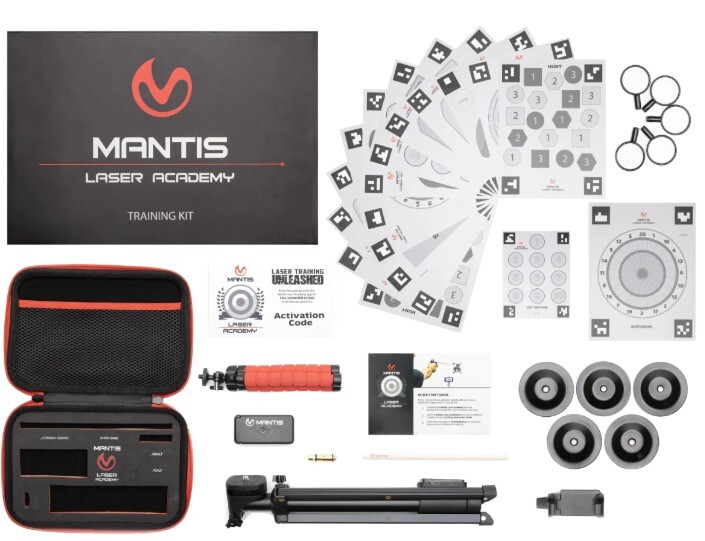
The Mantis Laser Academy provides a complete system for dry fire practice. It includes a caliber-specific laser cartridge, targets in various sizes, a tripod for your phone, and an app that uses your camera to score hits. Simply set up the targets, insert the laser cartridge, and start shooting. Good, even lighting and stable phone placement are important for reliable detection.
What makes the Laser Academy special is its versatility. You can practice standard accuracy drills, defensive scenarios, or even compete against friends in duels. The app records shot placement and provides instant feedback on accuracy and speed.
Price: $159
Specs
- Cartridge-specific
- App: Mantis Laser Academy
- Live-fire compatible: No (dry-fire scoring via camera)
Features
- Drills for draw, reloads, malfunctions
- Duel mode for head-to-head
- Hit maps and history
Pros
- Clear scoring feedback
- Easy setup
- Works with some third-party lasers
Cons
- Occasional false positives
- Needs good lighting and framing
- Cartridge fit per caliber
- Laser “hits” do not reflect recoil or true ballistic point of impact; confirm on the range
A-Zoom Snap Caps (Dummy Rounds)
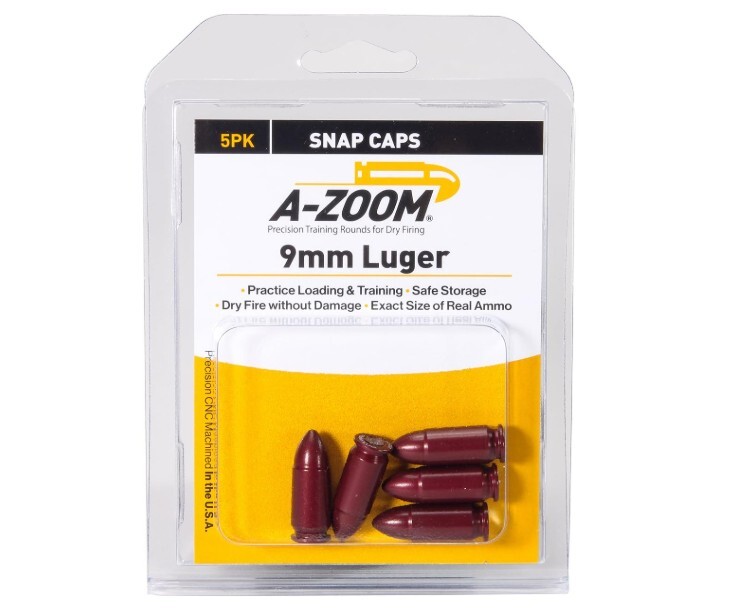
Snap caps are inert dummy rounds with a cushioned “primer” face. They’re strongly recommended for rimfires and many older designs, and still useful for centerfire guns to support loading/unloading reps and ball-and-dummy drills.
They excel for practicing loading, unloading, and malfunction drills safely. At the range, having a friend secretly load one in your magazine exposes flinching—when you expect recoil but get none, any jerking motion becomes obvious.
Price: $16–$22 for common 5-packs (at time of writing; varies by caliber/pack)
Specs
- Cartridge-specific
- App: None
- Live-fire use: Yes (ball-and-dummy and malfunction drills; inert rounds are not fired)
Features
- Protects firing pins on sensitive guns
- Induces and clears stoppages
- Reveals trigger flinch at the range
Pros
- Very affordable
- Essential for beginners
- Versatile drill support
Cons
- Cheap variants wear faster
- Easy to misplace
- No digital feedback
Mantis Blackbeard (AR-15 Auto-Reset Laser System)
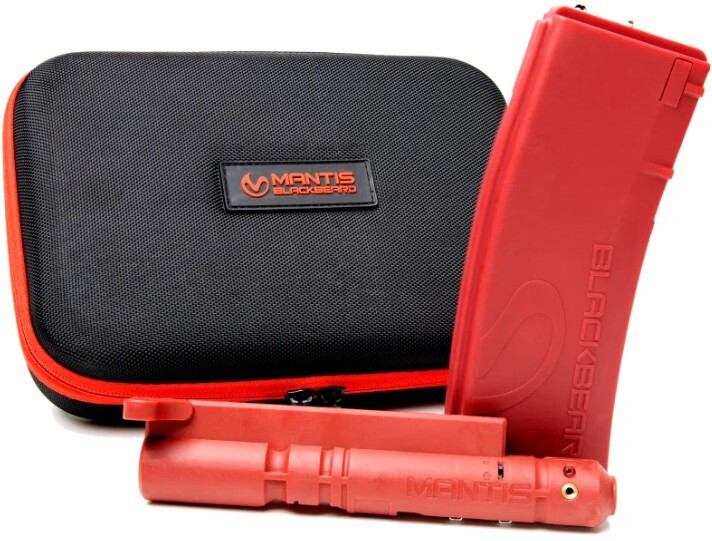
Blackbeard replaces the AR-15 BCG and magazine with a self-contained unit that auto-resets the trigger and emits a laser on break, preserving position through strings without charging-handle runs.
This elegant solution prevents a common training problem: the habit of breaking your shooting position to rack the charging handle after each shot. With the Blackbeard, you can run drills like VTAC 1-5 or failure to stop with the exact same cadence as live fire.
Price: varies by kit; commonly in the low-$200s and up
Specs
- Platform: AR-15 only
- App: Works with Mantis Laser Academy
- Live-fire compatible: No (dry-fire auto-reset system)
Features
- Auto-reset trigger mechanism
- Laser emission on break
- Case for storage/transport
Pros
- High-rep efficiency
- Great for target transitions
- Fun, engaging practice
Cons
- No reload/malfunction sim
- AR-only
- Battery management
Range Buddy Pro (App)
![]()
Range Buddy Pro catalogs drills with step-by-step guidance and a command mode to add pressure. It works for dry or live fire and is free to start, with optional in-app subscriptions for added content.
A standout feature is the command mode, which calls out instructions during drills. This adds pressure and realism to dry practice sessions. The app works equally well for dry fire at home or live fire at the range.
Price: Free (with optional in-app subscriptions)
Specs
- Universal
- App: Range Buddy Pro
- Live-fire compatible: Yes (timed/command drills at the range)
Features
- Drill indexing and walkthroughs
- New "command" mode
- Works with timers and lasers
Pros
- No cost barrier
- Clear drill structure
- Easy to start
Cons
- No motion diagnostics
- No scoring by camera
- Limited analytics
- Limited diagnostic analytics compared to motion-capture systems
Rogers TRT Tap Rack Dry Fire Devices (e.g., Rogers TRT 9mm/.40 S&W)

The TRT (Tap Rack Training) devices are small inserts that fit inside your magazines to prevent the last-round bolt hold-open from engaging. This simple tool fixes a common dry fire headache: constantly having to release the slide stop during reload drills.
These bright inserts sit in the magazine to prevent last-round hold-open and to block cartridge stacking. They streamline slide-lock reload practice and add a visual safety cue that the magazine is inert.
Price: $9–$12
Specs
- Cartridge/magazine-specific sizing
- App: None
- Live-fire compatible: No (dry-fire magazine insert)
Features
- Prevents accidental loading
- Streamlines slide/bolt returns
- Assists malfunction practice
Pros
- Very low cost
- Faster reload reps
- Adds safety margin
Cons
- Not universal fit
- No performance data
- Still need targets/timer
SIRT Training Pistol (and SIRT AR Laser Bolt)
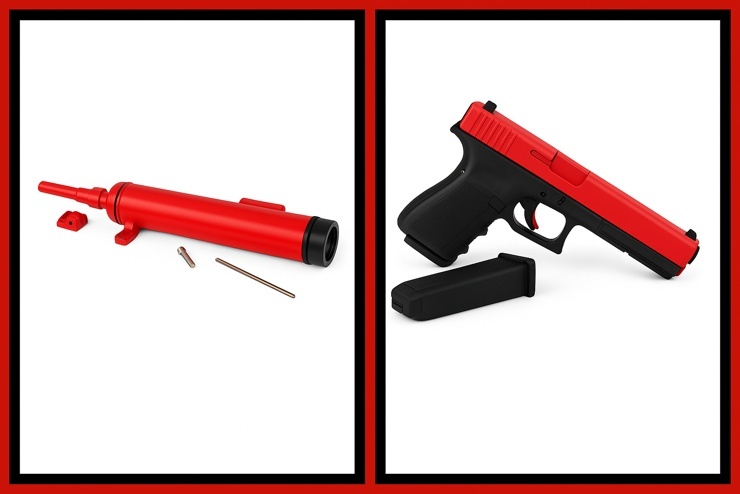
The SIRT (Shot Indicating Resetting Trigger) training pistol is a non-firing replica. It matches the weight, feel, and manual of arms of many carry guns. Press the trigger and a laser shows where the shot would land. You get clear feedback, fast. And you can repeat reps without noise or mess. Ensure your SIRT model matches your holster pattern if you plan draw practice.
Unlike laser cartridges in real guns, the SIRT is 100% inert and cannot fire live ammo. That makes it safe for movement drills, odd positions, and fast draws. You can add reload steps and target shifts, too. The AR Laser Bolt brings the same idea to rifles, so your carbine work gets the same clean, simple practice.
Price: $239–$439 (at time of writing; model dependent)
Specs
- Standalone training device
- Works with various laser apps/systems
- Live-fire compatible: No (non-firing replica)
Features
- Always "safe" platform
- Holster work without risk
- AR bolt option available
Pros
- Great for complex reps
- Visual hit feedback
- Useful indoors
Cons
- Higher price
- Trigger differs from duty gun
- No ballistic recoil
- Holster fit and trigger characteristics may not perfectly match your live firearm
Mantis X2 (MantisX Rail Sensor)
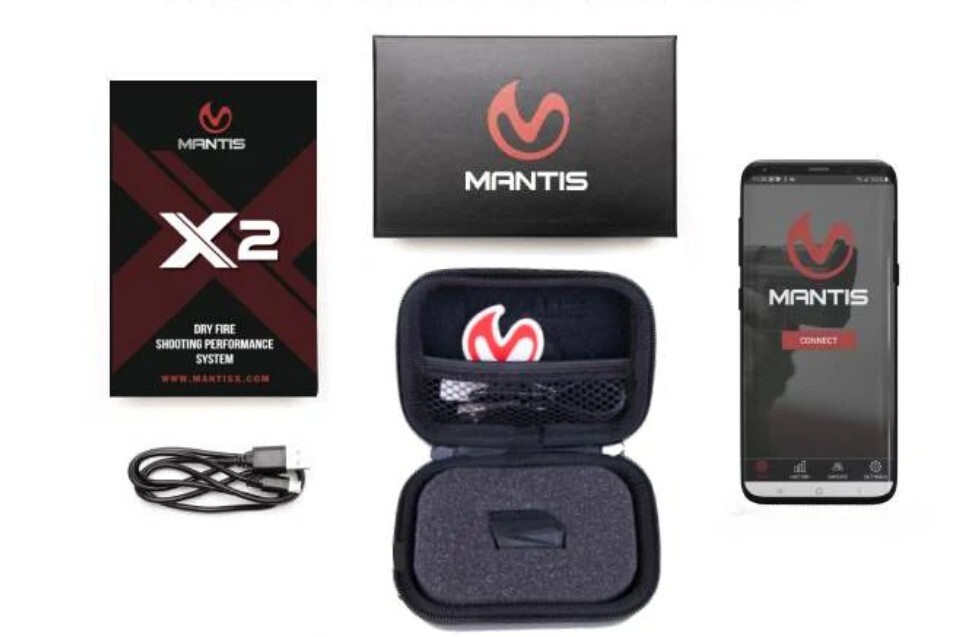
The Mantis X2 is a small device that attaches to your firearm's accessory rail to track microscopic movements during trigger press. It feeds this data to your phone or tablet via Bluetooth, creating detailed reports that show exactly what's happening when you press the trigger.
Beyond just collecting data, the Mantis app analyzes your performance and provides specific recommendations to improve. It can detect common issues like anticipation, heeling, or jerking the trigger, then guide you through fixes with built-in lessons and drills.
Price: $99
Specs
- Requires accessory rail to mount
- App: Mantis
- Live-fire compatible: No (X2 model is dry-fire only)
Features
- Movement trace and coaching
- Grip and trigger analysis
- Historical trends
Pros
- Strong insight per rep
- Clear fixes for common errors
- Good value
Cons
- Won't fit some revolvers/older guns
- Learning curve in data review
- X2 is dry-fire only
Laser Ammo Systems (Generic Category, e.g., laser cartridges/targets)
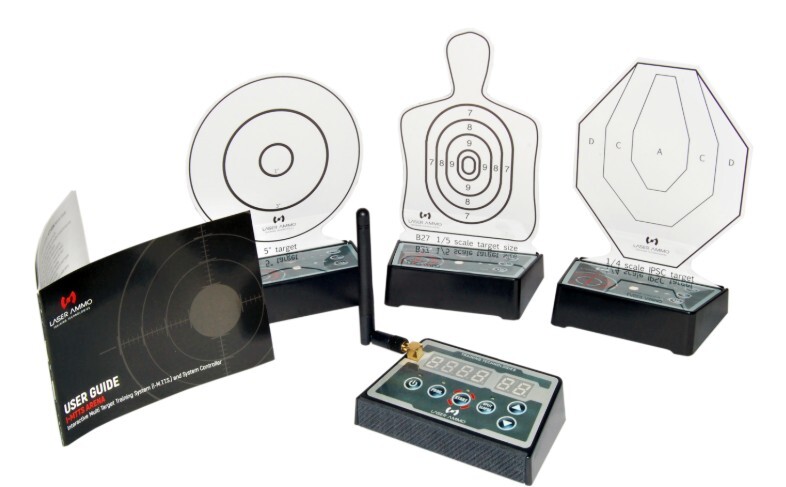
Laser ammo systems use caliber-specific cartridges that emit a brief laser pulse when struck by your firing pin. This shows exactly where your shot would have landed. It gives immediate feedback on your sight alignment and trigger control. Use eye-safe, visible lasers and verify the cartridge matches your chamber exactly.
These systems can be paired with reactive targets that register hits or smartphone apps that score and time your performance. The visual confirmation of hits makes dry fire more engaging and helps diagnose aiming issues before they become habits.
Price: $99–$120 for single-cartridge kits; bundles higher
Specs
- Cartridge-specific
- App: Optional/varies by setup
- Live-fire compatible: No (dry-fire laser feedback)
Features
- Visible laser "hits"
- Multi-target setups
- Draw and transition drills
Pros
- Immediate visual feedback
- Flexible configurations
- Good for groups
Cons
- Alignment and fit matter
- Lighting can affect sensors
- Cost varies widely
- Always verify bore alignment and avoid reflective backgrounds; follow laser safety practices
How To Choose the Right Aids for Your Goals
Start by isolating a dedicated, ammo-free room with a safe backstop. Handgun owners have the widest device choices; AR users should consider an auto-reset system; revolver users benefit most from snap caps and a timer. Begin with free drills and simple tools, then layer in devices that give new kinds of feedback (timer → laser scoring → motion analysis).
Different aids provide different feedback. Timers tell you "how fast" but not "how well." Laser systems show where shots land but not why. Motion sensors like the Mantis X2 reveal grip and trigger issues invisible to the naked eye.
Core Drills You Should Master
Coin Trick (Trigger Control)
Place a coin on your front sight or slide. Take up the trigger slack slowly. Press straight back until the gun clicks. Did the coin stay put? If so, your trigger press was clean. If not, you're moving the gun during the press.
Common errors include jerking the trigger, anticipating recoil, and breaking your wrist during press. Success looks like a motionless front sight and the coin staying balanced for 5-10 presses in a row.
Presentation Drill (From Holster)
Start with a proper grip on the gun in the holster. Draw smoothly and rotate the muzzle toward the target as it clears the holster. Bring your support hand to meet the gun, then extend toward the target. Align sights and press.
Begin at 50% speed to build proper form. Only add speed once your technique is consistent. A timer helps measure progress without sacrificing form.
Use only an unloaded firearm with a chamber flag and verify your holster is clear of obstructions before starting reps.
Reloads (Slide/Bolt-Lock)
Start with an empty gun at slide lock. Release the empty magazine, reach for a fresh one (loaded with snap caps or empty), insert firmly, and release the slide. Then reacquire your target.
TRT magazine inserts make this drill flow better by defeating the slide lock. It lets you practice the motion without constantly manipulating the slide release.
One-Hand Only and Support-Hand Only
Practice firing with just your dominant hand. Then switch to your non-dominant hand. Focus on grip pressure, sight alignment, and trigger control without the stability of a two-handed grip.
Be extra careful with safety during these drills. Start slow and build fundamentals before worrying about speed.
Positional and Use of Cover
Practice shooting from kneeling, seated, and prone positions. Add simulated cover by positioning furniture or cardboard cutouts to practice shooting around obstacles.
Work on smooth transitions between positions and proper use of cover. Focus on exposing minimal body area maintaining a stable shooting position.
Turning Drills Into Data
The SG Timer GO provides objective time measurements for your dry fire. Set par times slightly faster than your current average to create productive pressure. Track first-shot times from the holster and split times for follow-up shots.
The Mantis X2 shows exactly what's happening during your trigger press. The trace reveals anticipation (dipping the muzzle before the click) or other errors. The app suggests specific fixes based on your patterns.
Mantis Laser Academy scores hit locations across different target zones. This reveals accuracy patterns over time. Are you consistently hitting low left? High right? The visual feedback helps connect technique to outcomes.
A dry fire journal—paper or digital—tracks your progress. Record date, drill, times, and observations. After a month, review trends to see where you've improved and what needs work. Re-validate your dry-fire gains with periodic live fire to confirm point of impact, recoil control, and reliability with your defensive ammunition.
AR-15 Specific Dry Fire
The Mantis Blackbeard prevents a common training issue: racking the charging handle after each shot. This creates a bad habit of breaking your firing position unnecessarily. With the Blackbeard, you maintain proper position through multiple shots.
AR micro-sessions might include running the VTAC 1-5 drill (firing 1 shot at 5 different targets, then 2 shots each, etc.), practicing failure-to-stop drills (two to the body, one to the head), or working on smooth target transitions.
Use printed targets against a reinforced interior wall with a true backstop. Avoid aiming toward windows, doors, or thin interior partitions.
Budget Builds vs. Advanced Rigs
A budget kit can start with snap caps, printable targets, and a free par-timer app. An intermediate kit might add a dedicated dry-fire timer, magazine inserts, and a trigger-reset device. Advanced builds layer in motion analysis, laser scoring, and AR auto-reset systems. Spend where feedback quality meaningfully improves your practice; consistency beats gear.
Daily, Weekly, and Monthly Practice Plans
For daily 7-12 minute sessions, try 5 minutes of coin drill to establish trigger control, 5 minutes of draw practice, and 2 minutes of reloads. Finish by noting key observations in your journal.
Weekly, schedule two 20-minute sessions. Use a timer to run standard drills like the 5×5 challenge or dot torture. If you have a laser system, score your hits on different target zones and compare them to previous weeks.
Monthly, retest your baseline par times from concealment. Compare your Mantis scores to the previous month. Set par times just faster than your honest average, then lower the par gradually as consistency improves.
Common Mistakes and Fixes
Rushing the draw often leads to fumbled grips and poor accuracy. Fix this with a step-down cadence: practice at 50% speed until perfect, then 75%, then 90%, never sacrificing form for speed.
Heeling (pushing with the palm) causes low-left impacts for right-handed shooters. Use a wall drill: aim at a blank wall a few inches away and press the trigger while watching for sight movement. Mantis trace review helps diagnose and fix this common error.
Over-gripping with your support hand creates torque that pulls shots off target. Try a 60% dominant hand, 40% support hand pressure ratio. Ratios are starting points; adjust to maintain sight stability through the break. The Mantis X2 clearly shows if grip pressure is causing movement.
Breaking the grip to reset the striker between dry shots creates bad habits. The DryFireMag or SIRT pistol lets you maintain proper grip through multiple trigger presses.
Learning is faster and can be safer with dry fire, and it's easier to practice trigger control without developing a flinch, which is a pre-emptive reflex some beginners develop due to being unaccustomed to the trigger weight or anticipating a recoil.
Buying Guide Pointers
Check fit and compatibility before purchasing. Does your handgun have an accessory rail for a Mantis X2? Will that laser cartridge fit your caliber? Does your DryFireMag work with your specific pistol model?
Look at the app ecosystem and update frequency. Tools with regularly updated apps and strong user communities tend to provide better long-term value and support.
Investigate replaceable parts and battery needs. Laser cartridges need battery replacements. Will you need special tools? How often do components wear out?
Review warranty and support options. Quality companies stand behind their products with solid warranties and responsive customer service.
Before buying, confirm return policies and warranty coverage—especially for model-specific devices and laser cartridges.
Conclusion
Dry fire lets you build skill each day. No range fees. No ammo cost. The right tools help by giving feedback, letting you run real reps, and keeping you interested.
Start with the basics and simple tools. Add advanced aids as your skill and budget grow. Consistency beats flashy gear. Five minutes each day with snap caps beats an hour once a month.
Track your progress. Focus on form before speed. Then take those dry fire gains to the range. With steady habits and the right tools, you will see clear gains in your shooting basics.
Dry fire devices are powerful tools — but the best results come from pairing them with high-quality drills. Check out our complete guide to essential Dry Fire Drills to build a routine that actually delivers improvement.
Frequently Asked Questions (FAQs)
Is dry fire safe for my firearm?
Most modern centerfire pistols and rifles tolerate frequent dry fire. Many rimfires and some older designs should use snap caps or chamber blocks. When in doubt, follow your manual.
Do I need snap caps for centerfire pistols?
Not strictly for most modern designs, but they’re valuable for malfunction drills, ball-and-dummy reps, and peace of mind during high-volume dry fire.
How many minutes should I practice each day?
Just 5-10 minutes daily yields better results than an hour once a week. Consistent, focused practice builds more skill than longer, sporadic sessions.
What's the fastest way to see progress at home?
Combine a shot timer with a feedback system like Mantis X2 or Laser Academy. The timer adds pressure, and the feedback system shows exactly what's happening during your trigger press.
Do laser tools replace range time?
No. Dry fire builds fundamentals, but live fire adds recoil management, muzzle blast acclimation, and true ballistic results. Use both for best results.
Can I use timers for dry fire without gunshots?
Yes. The SG Timer GO has a dry fire mode that detects the click of your firing pin. Other timers work with par time settings to measure your performance against set standards.
About the Author
The Pro Armory writing team wrote this article using current research, including studies from trusted sources like the Journal of Military Science, Firearms News, and the National Shooting Sports Foundation. The team also used official defense publications and respected firearm authorities such as the ATF, NRA, and manufacturer manuals.
Disclaimer: This article is for education only. Laws vary and change. Follow safe handling at all times, use laser devices safely, and read your owner’s manual. Verify and comply with local laws. End each session by storing the firearm before any live ammunition returns to the room.




 Pro Armory Editorial Team
Pro Armory Editorial Team